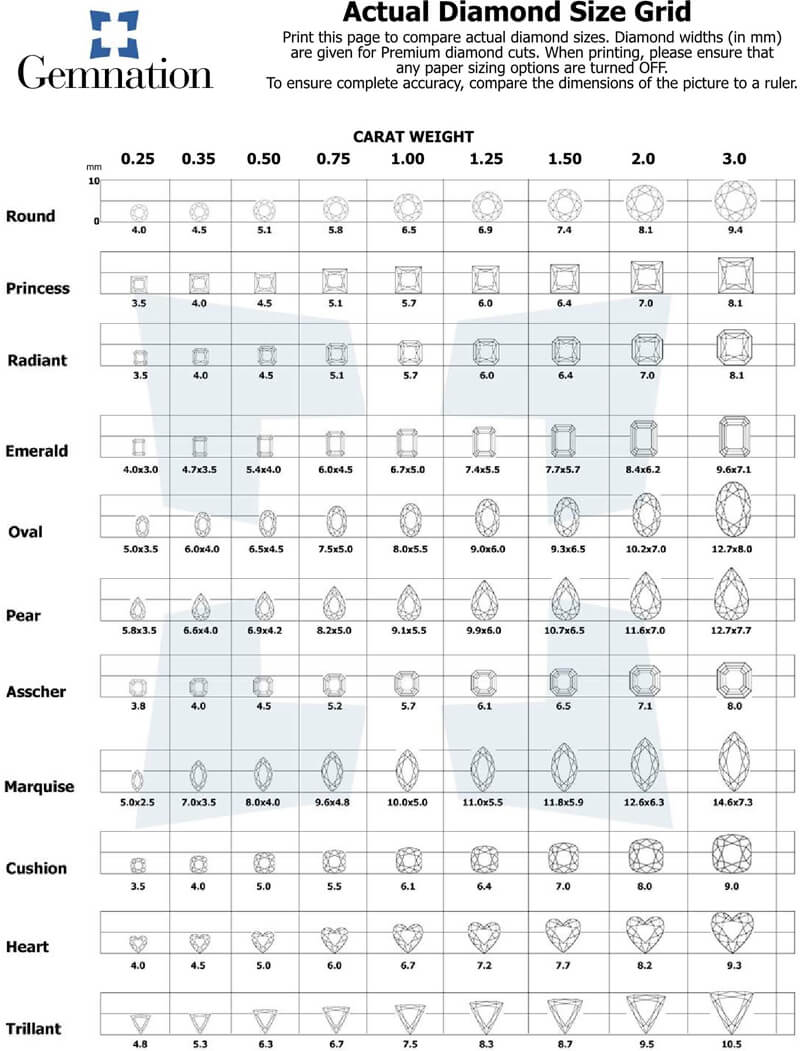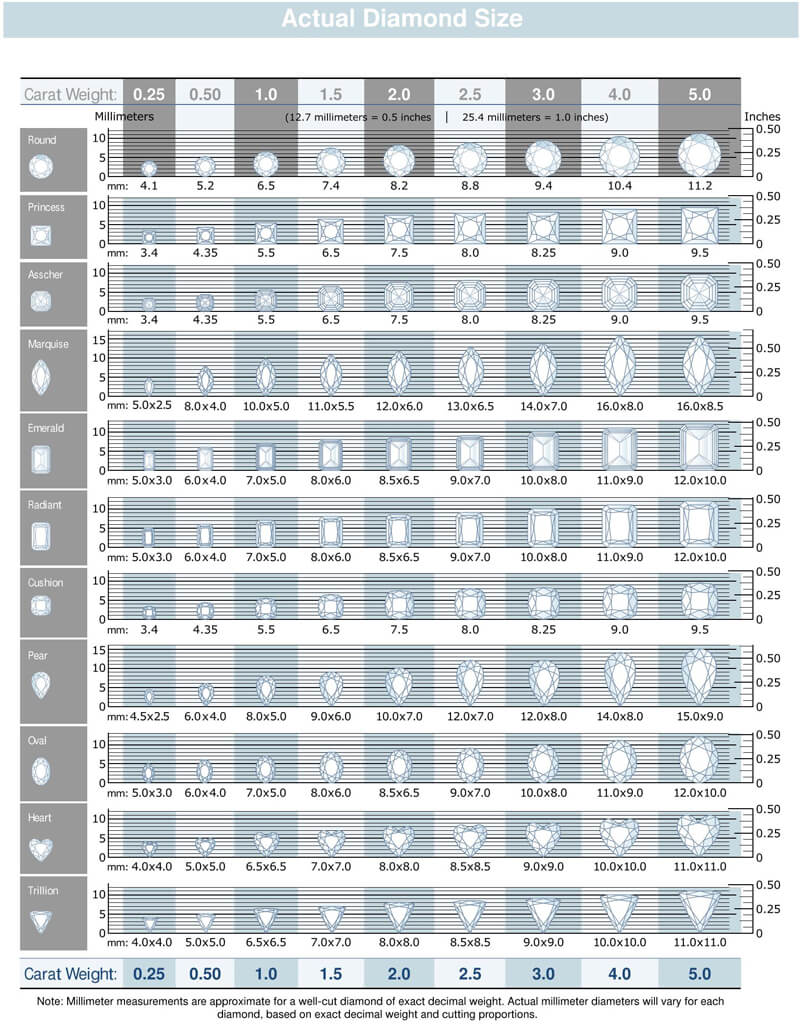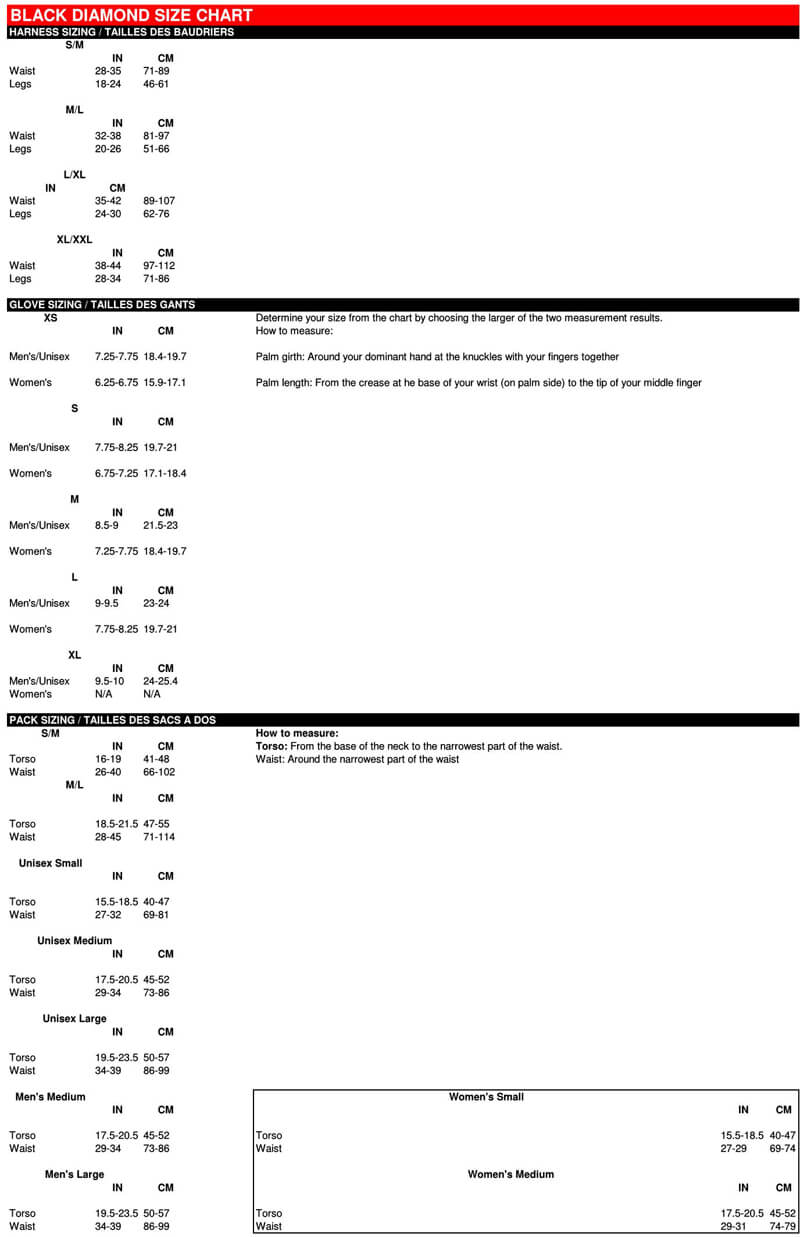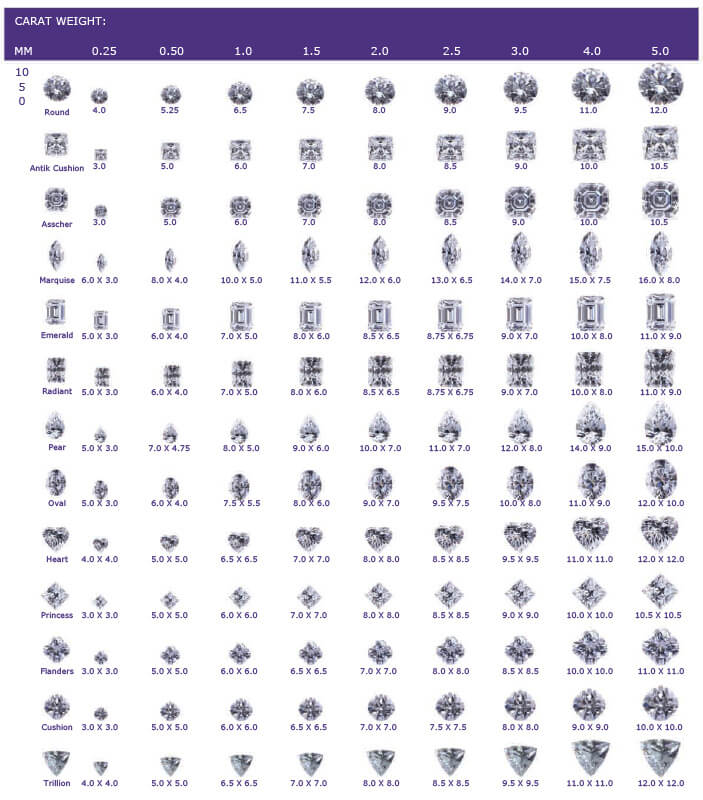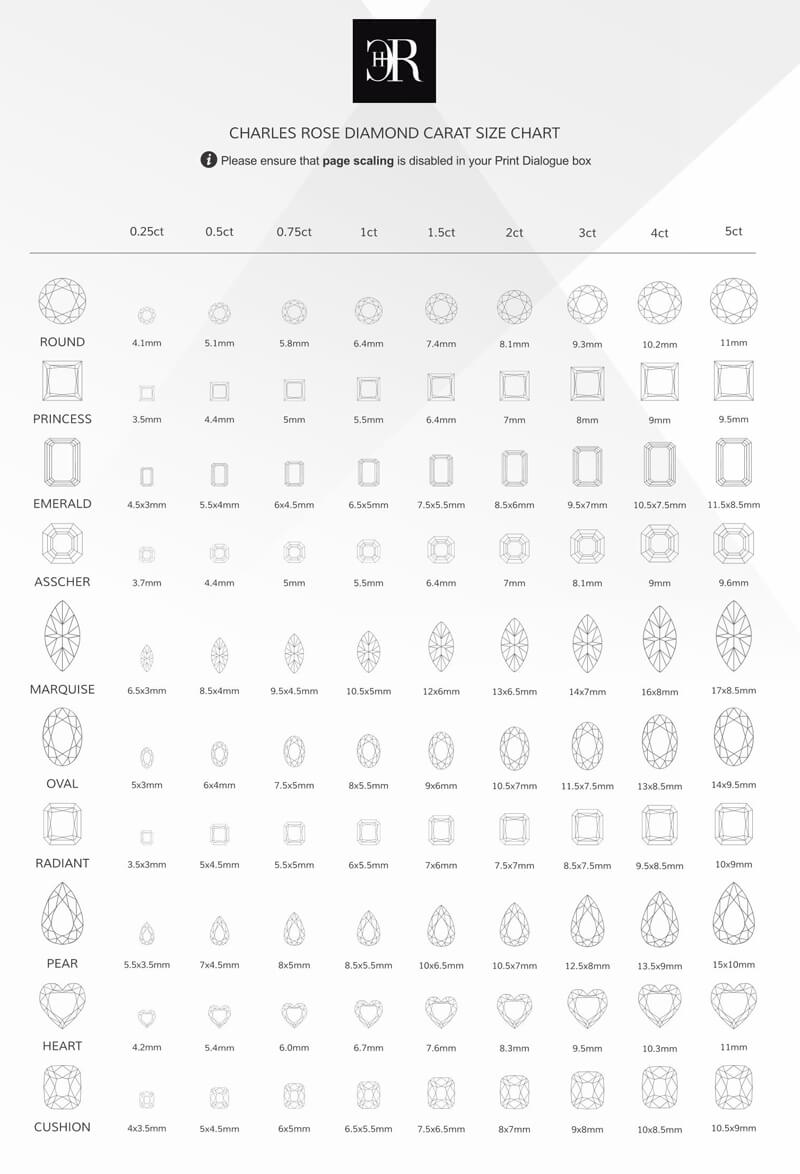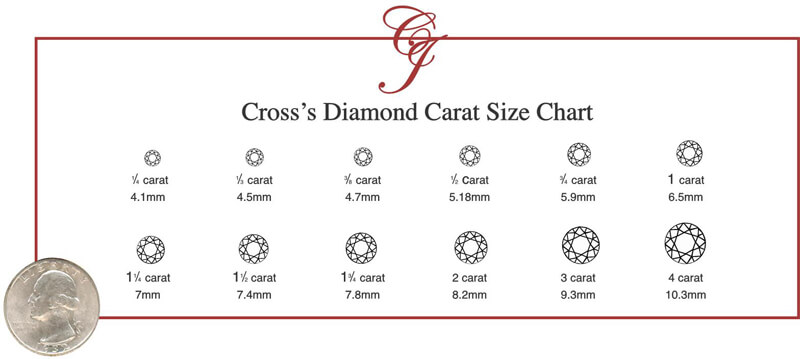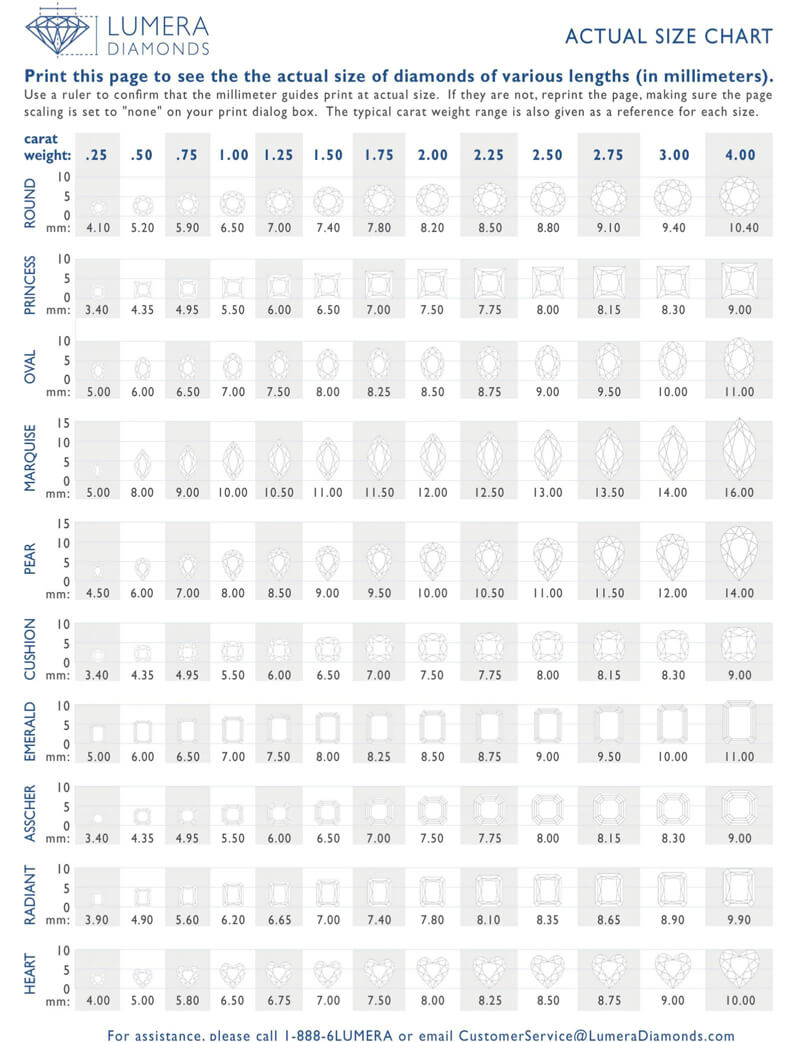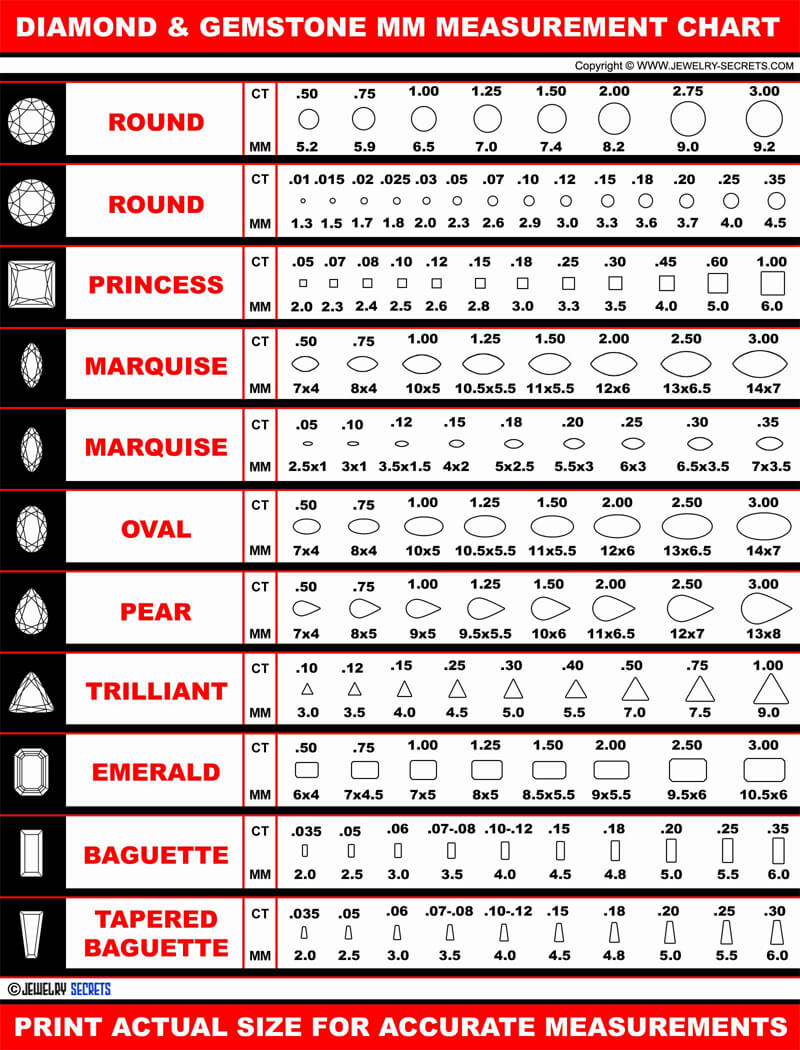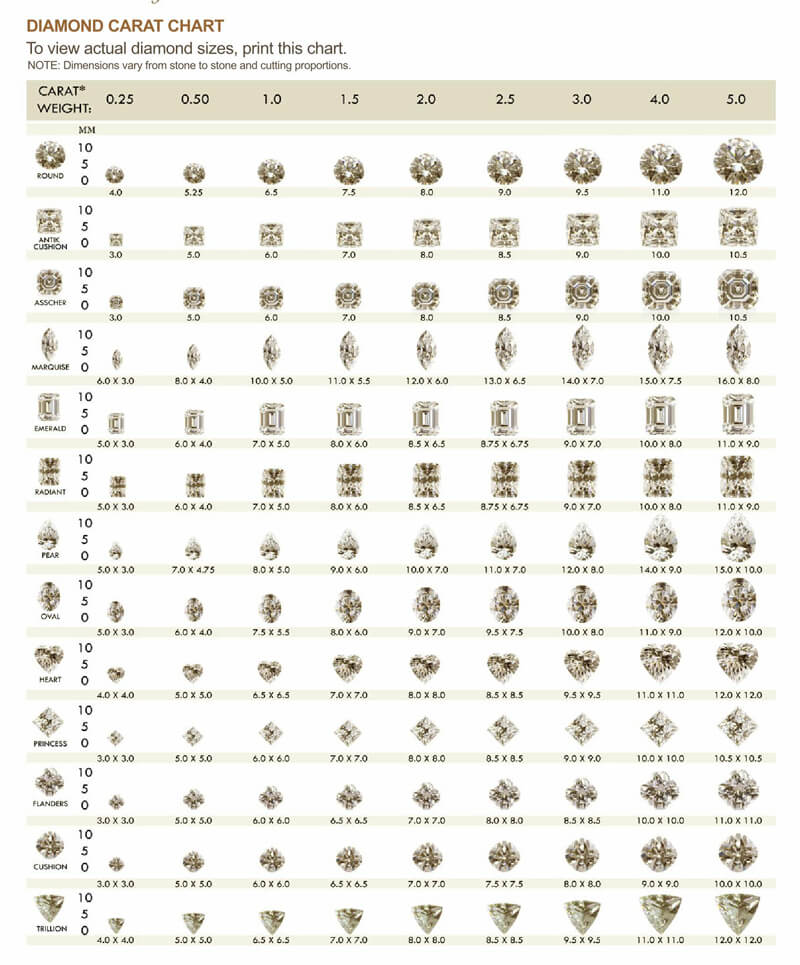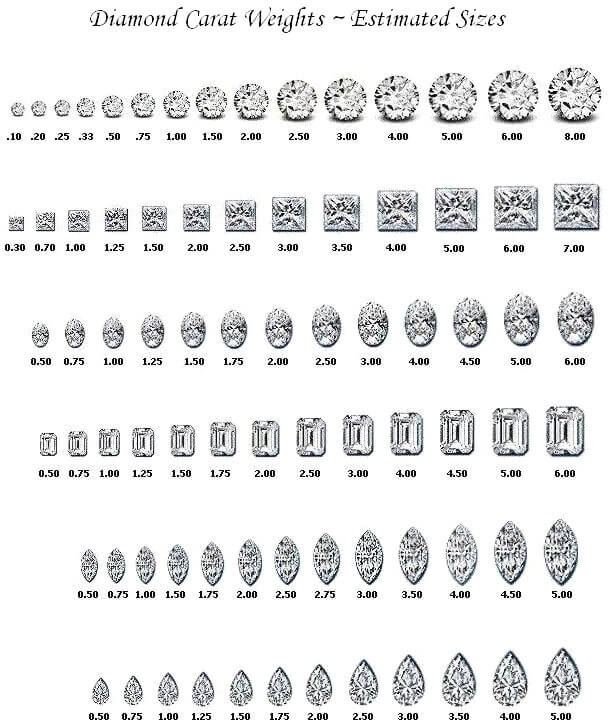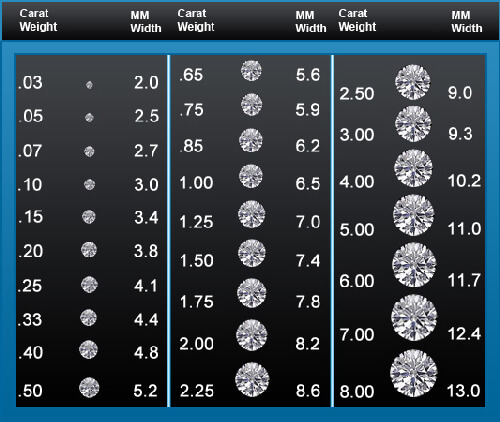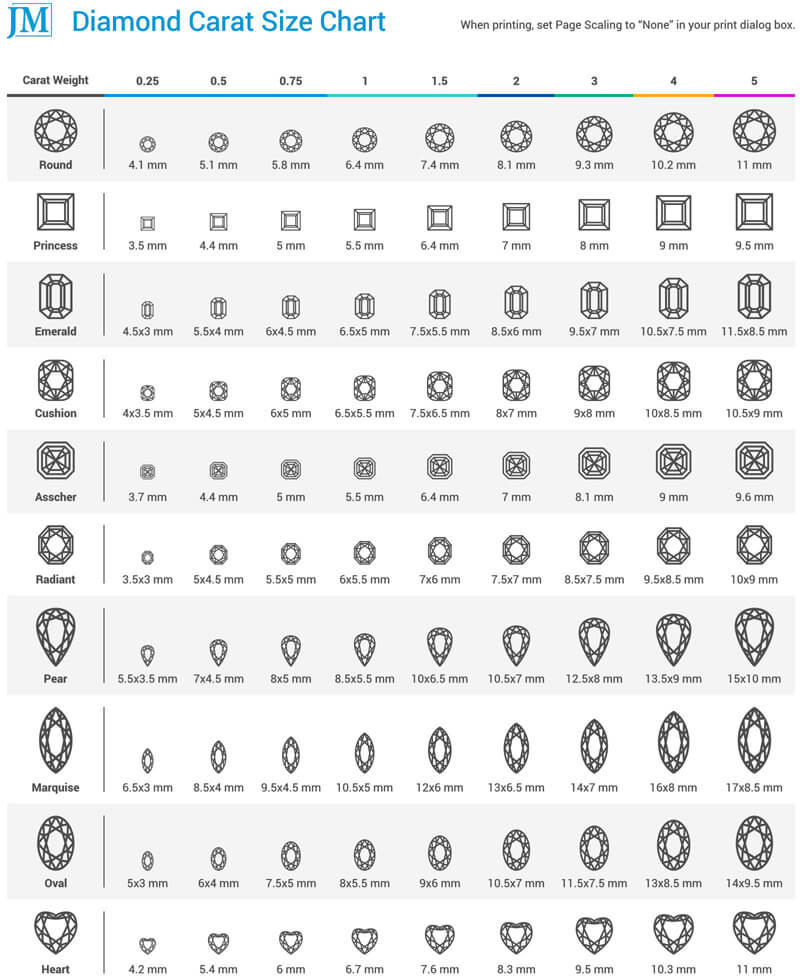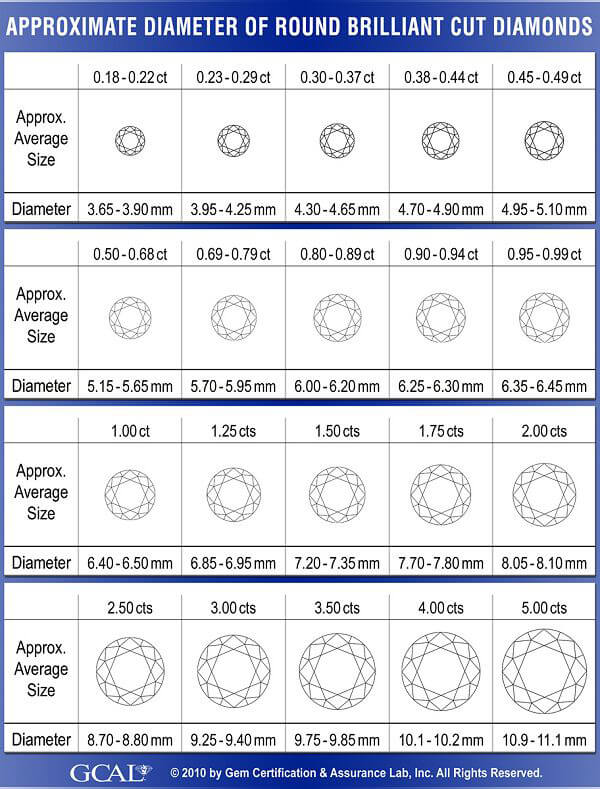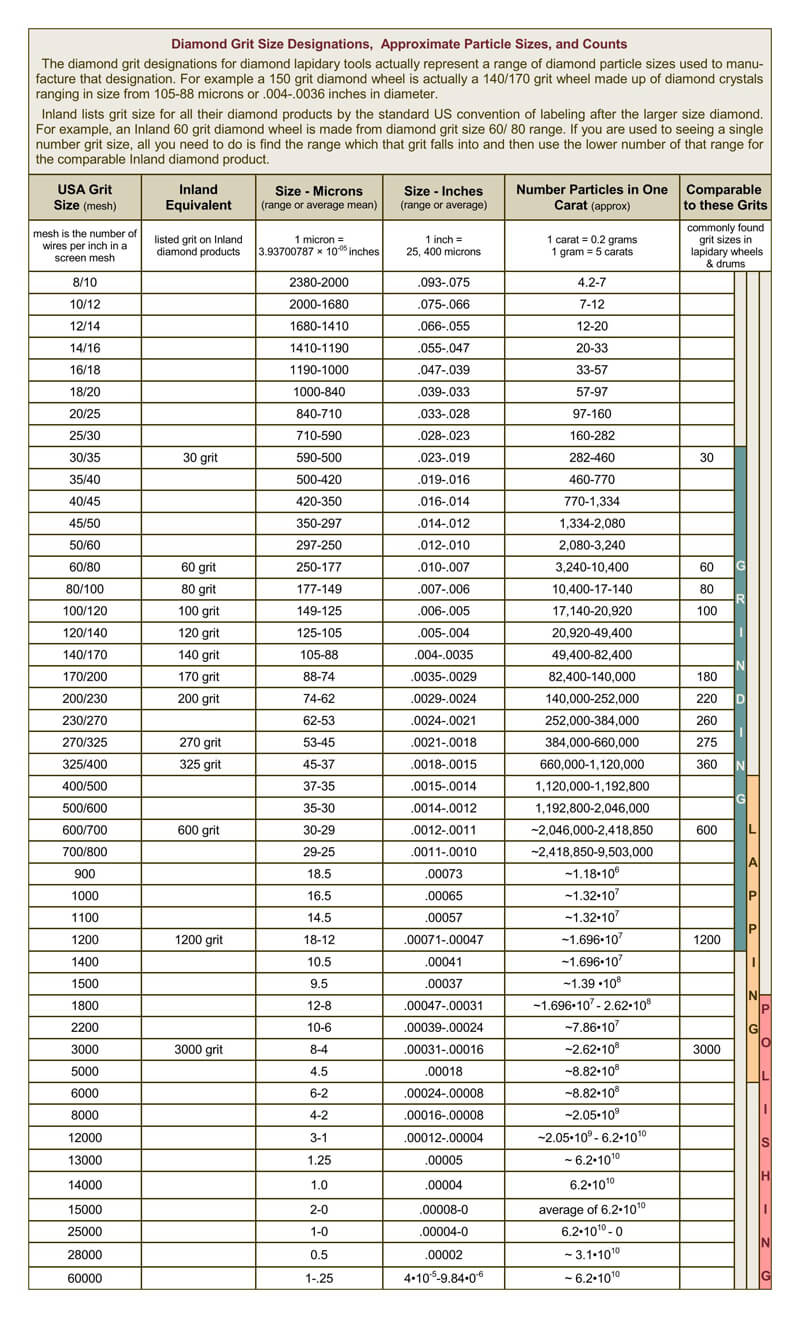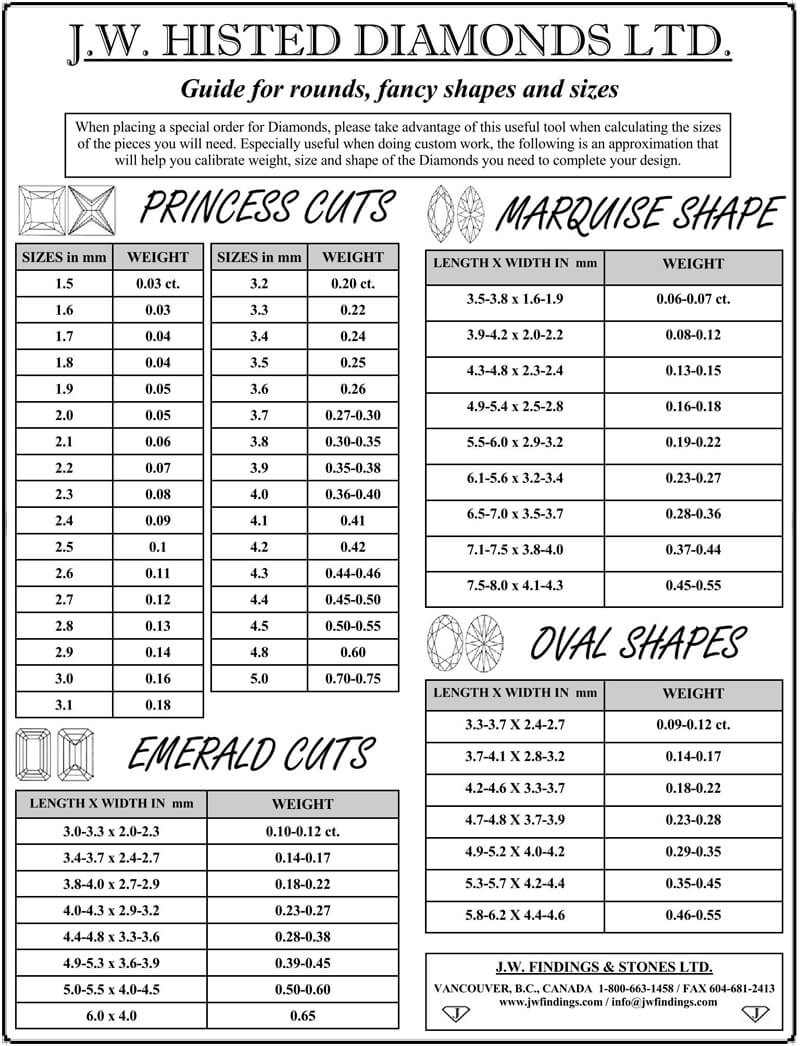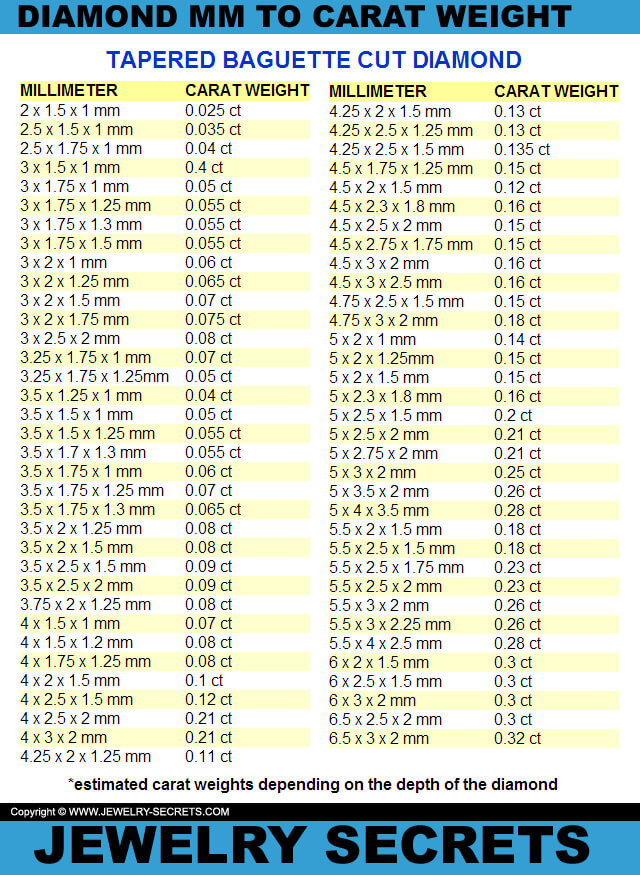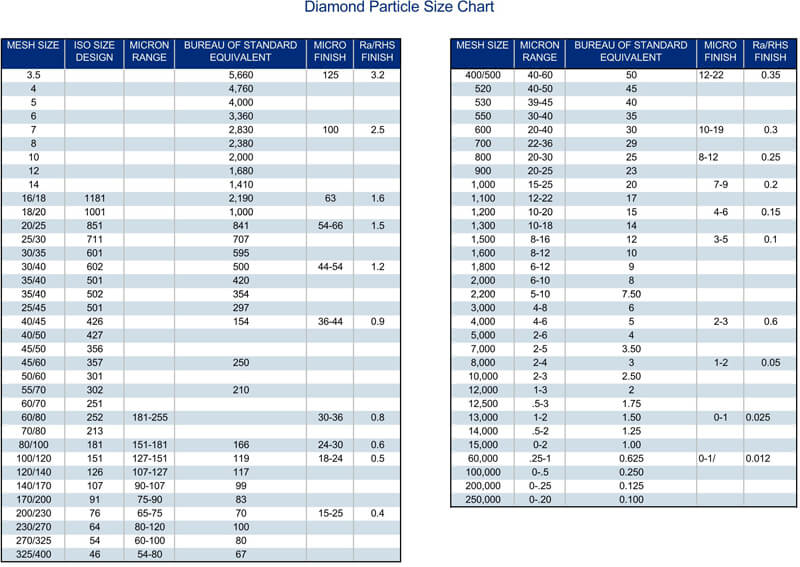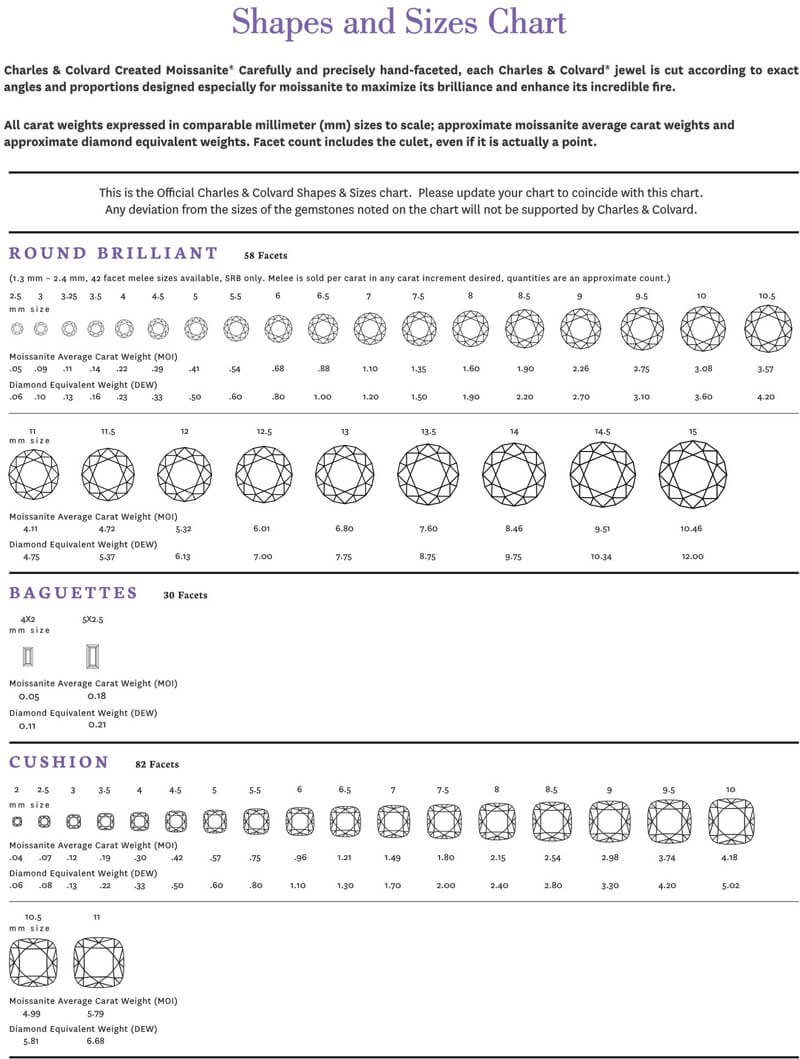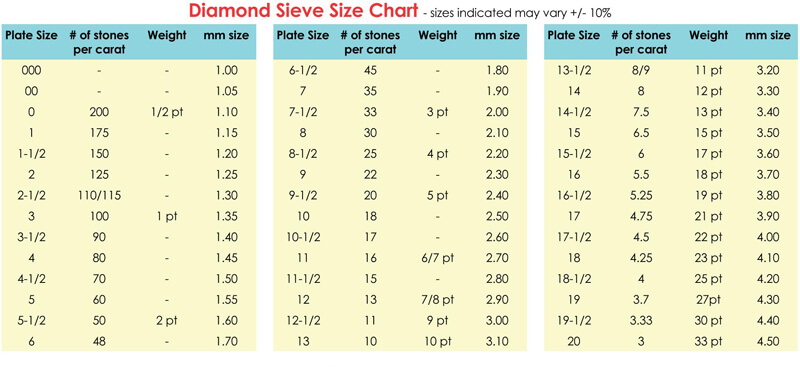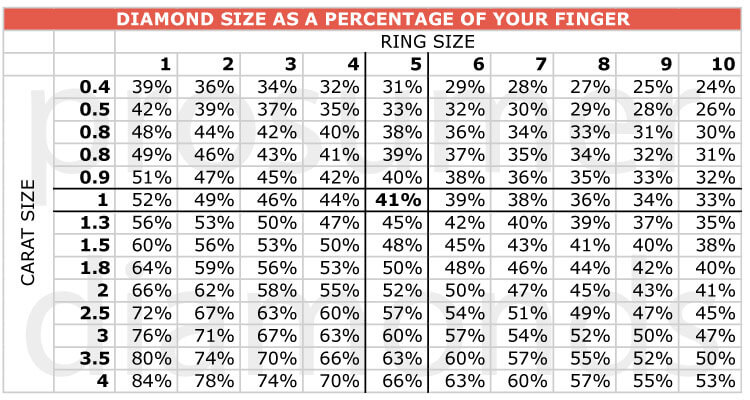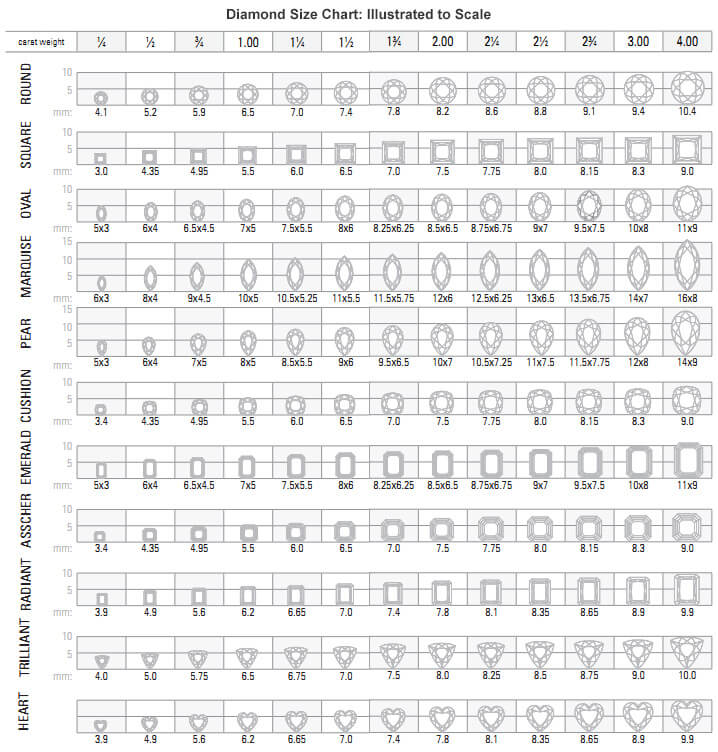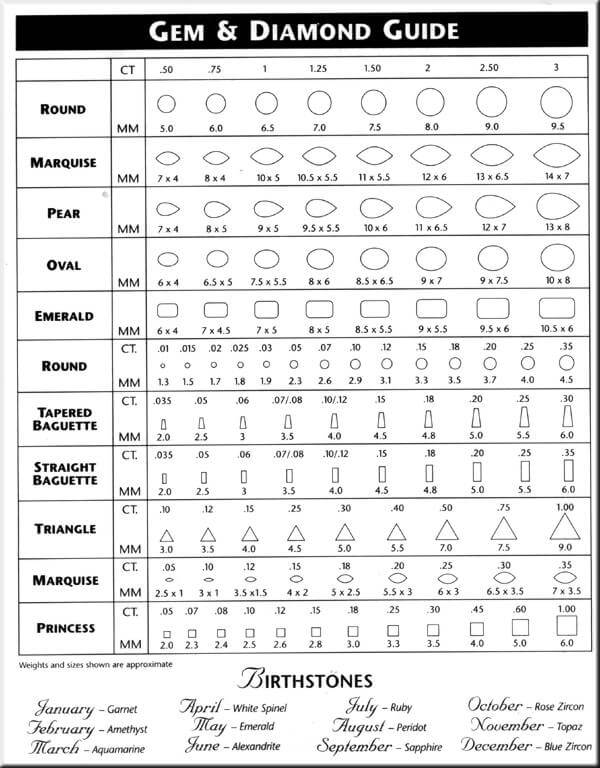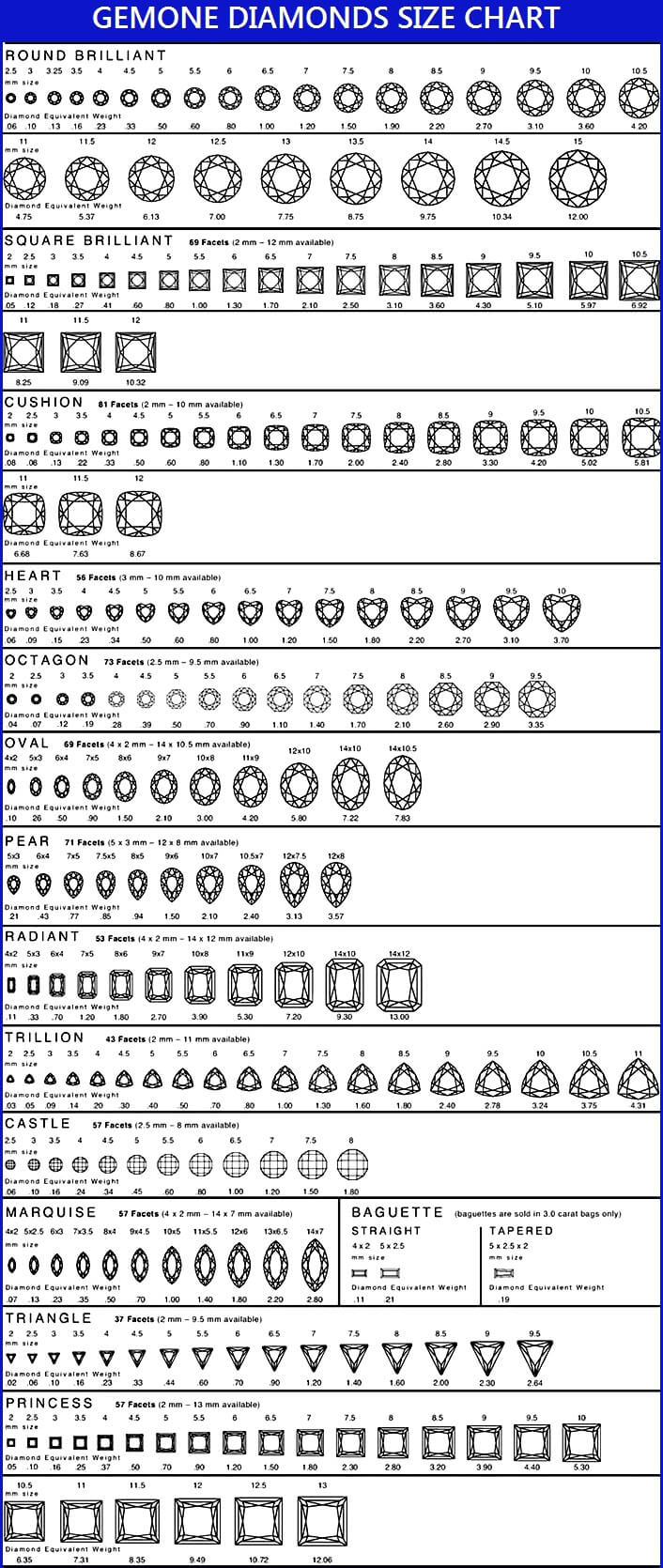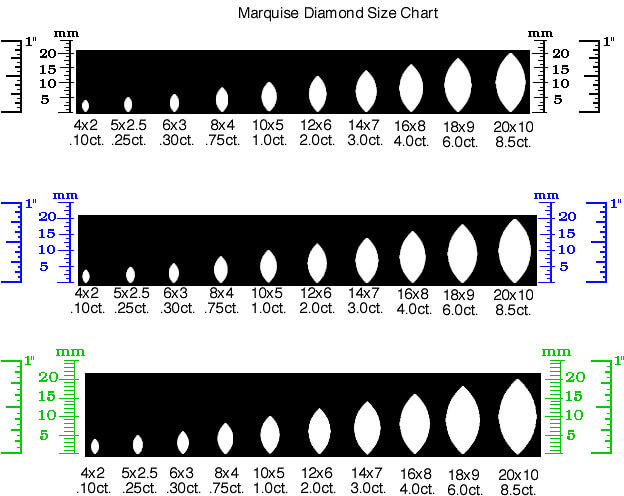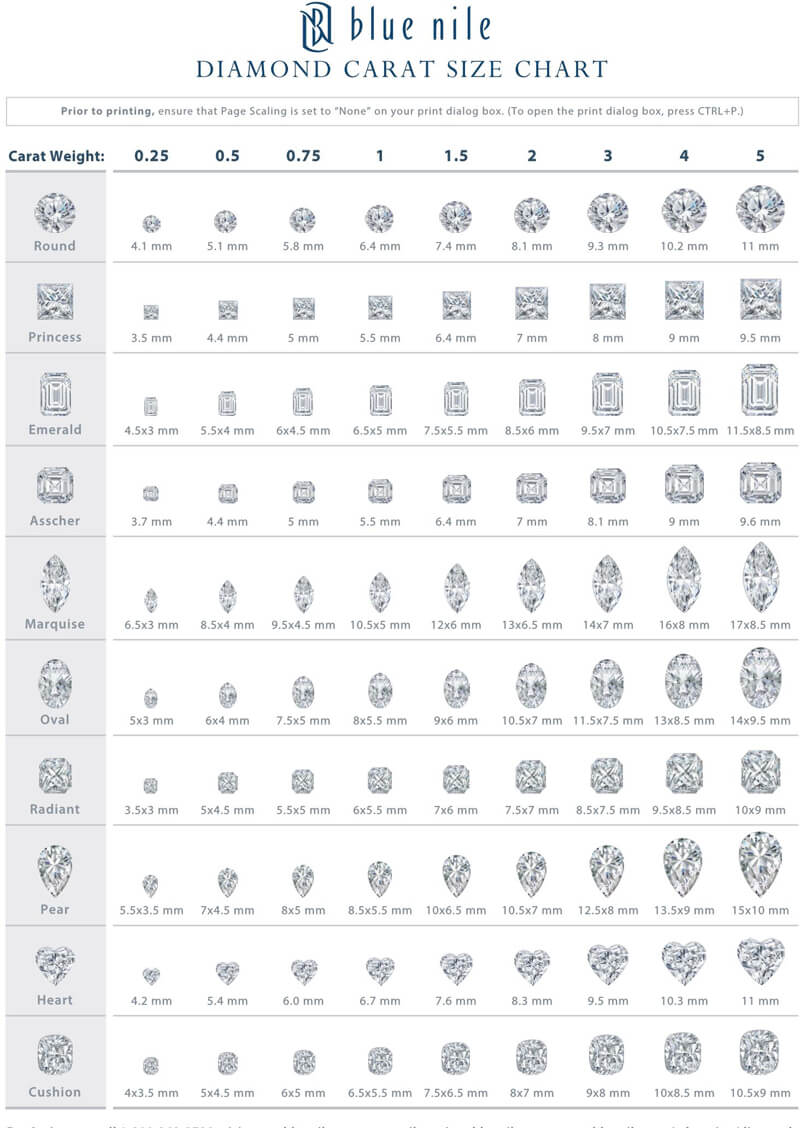Diamonds are measured in both millimeters and carat weight with the help of a diamond size chart. Although carat weight is deemed to be the standard unit of measurement for diamonds, it’s also essential to consider the millimeters and ratios to ensure you get the best value for your money.
Importance of the Millimeter Measurement
When diamonds are measured in millimeters, you’re able to know the exact weight. This is so because a diamond can have different facets, thus making it look bigger than its carat weight equivalent. Therefore, if you want a diamond that looks large than its carat weight, you should go for showy shapes such as pear, oval, or emerald.
Besides, if you want a diamond already existing ring setting, it’s essential to consider the millimeter measurements. The style of the setting will guide you to choose a diamond with an exact millimeter size.
When buying non-round diamond shapes such as emerald and cushion, you should also consider the millimeter measurements. These measurements will help you to know if the cushion diamond is squarish or not; most emerald diamonds will take more rectangular shapes.
As you shop for your diamonds, check both the millimeter and carat weight measurements on the GIA certificate of the diamond.
What About “Pointers” ?
In the diamond market, you’ll hear of the term “pointers”; this is an equivalent measurement to specific carat weights or millimeter sizes. For example, a one-pointer may refer to a 0.01-carat diamond. Typically, these terms are employed in describing smaller accent diamonds on diamond jewelry or engagement rings. Although each diamond is distinct, it’s vital to have an understanding of the average millimeter sizes for various carat weights to help you in choosing the best option.
Choosing a diamond size
When purchasing diamonds, it is essential to emphasize the carat weight since the millimeter size can vary for diamonds bearing the same carat weight. From a face-up view, a diamond’s depth can affect its millimeter size; the machinery used in cutting diamonds can also cause slight variations in the millimeter size.
If you have doubts about getting it right in diamond sizing, you can seek the advice of a gemologist for the ideal measurements for a specific shape. You’ll realize that some diamonds may appear cheaper than usual since their millimeter size is less than the standard.
Shop Diamonds
We have compiled some printable diamond size charts to help you choose your ideal; diamond. These charts will guide you on what to choose, depending on the cut. They include:
- Round Diamond Size Chart
- Princess Diamond Size Chart
- Cushion Diamond Size Chart
- Emerald Diamond Size Chart
- Oval Diamond Size Chart
- Pear Diamond Size Chart
- Marquise Diamond Size Chart
- Ascher Diamond Size Chart
- Radiant Diamond Size Chart
Printable Diamond Size Charts
The 4C’s When Choosing Diamonds
When choosing your ideal diamond ring, the choice will be easier if you consider what we refer to as the 4C’s. They include;
Carat weight
The diamond’s carat weights indicate the size of the stone. Carat weight is the standard measurement used for diamonds. Diamonds are measured from 0.25 carats to 2.00carats. This means a 2.00ct ring will be large will if you want smaller rings, you should consider ones that are less than 1.00ct.
Clarity
Besides the color, you should also consider the clarity of the diamond. If the diamond is clearer, it means it has no impurities, and it’s pure; thus, it’s worth your money. Grading of demands also considers the clarity, and the best diamonds are classified as grade 1.
Cut
Regarding diamonds, the chttps://www.robbinsbrothers.com/diamond-shapes-and-cutsut refers to the proportions, finish, polish, and symmetry conferred to the diamond. It’s what gives the diamonds its shape and makes it sparkle. The beauty of a diamond depends on its cut; thus, go for brilliant cuts with maximum facets.
Color
Diamonds are categorized according to their colors; this will range from shades of brown, yellow, gray, and colorless. Expert’s grade diamonds alphabetically according to their colors from letters D-Z and the best diamonds are in D, F, G, H, I, and J. These diamonds are stunning and sparkling white, and they keep on appreciating.
Expert tips when purchasing diamonds
- When shopping for diamonds, consider well-cut ones since they appear larger than their carat weight. They usually appear to be more spread and less dense.
- It’s also essential to consider the carat weight cutoffs if you want to pay less for your diamonds. For example, a 1.40ct will be considerably cheaper than a 1.50ct, yet the visual difference is minimal.
- Although the carat size is the most significant aspect when purchasing diamonds, you should also consider other critical factors such as color, cut, and clarity.
What diamond size is considered big?
Most individuals are confused when they hear about diamond carats; in simple terms, the carat indicates the weight of the diamond and not its size. When looking at diamond carat sizes, it’s essential to consider the cut as well since a high carat and a poor cut may make the diamond look smaller. Consider using our expert tips, diamond size charts, and buying tips to select your ideal diamond carat weight.
The standard weight carat for an ordinary diamond ring should be between one and two carats. Thus anything that exceeds this weight can be considered as big. But remember, this may vary due to several factors, including the locating, event, cut, color, and clarity.
Final Thoughts
Although choosing diamonds can be confusing to some individuals, the task becomes easier when you consider expert tips, the 4C’s, and the use of the diamond size charts. If you have any challenges in using the chars, you can always consult a gemologist. We have made your work easier by availing different diamond size charts based on the shapes and cuts of the specific diamonds.
